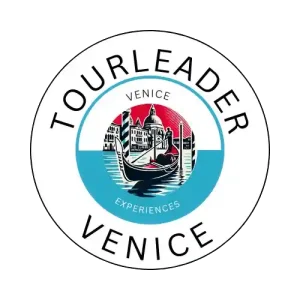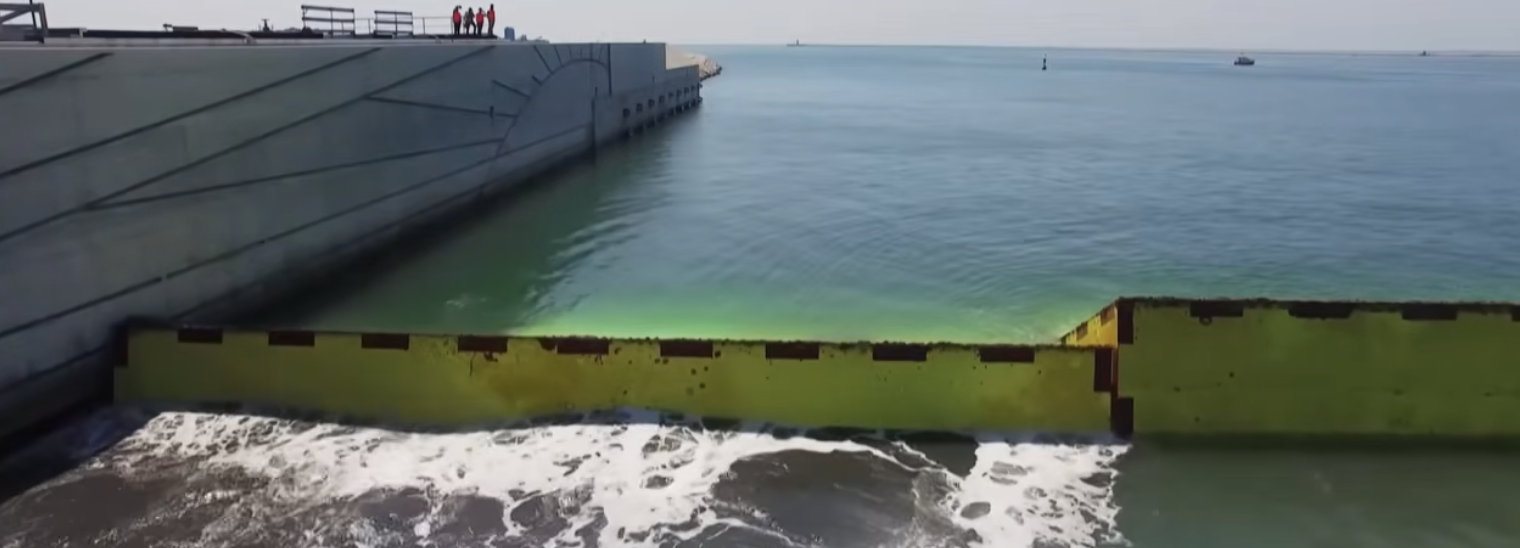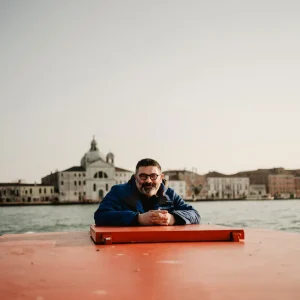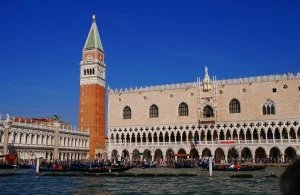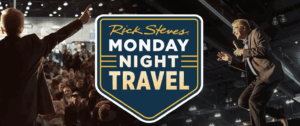What Is Acqua Alta and When Does It Happen? 🌊 The Complete Guide to Venice’s High Tides
If you’ve ever seen photos of people in Venice walking on raised wooden walkways or wearing rubber boots through Piazza San Marco, you’ve already witnessed Acqua Alta — literally, “high water.”
But what exactly is Acqua Alta? Does it mean Venice is sinking? Is it dangerous for travelers? And when does it actually happen?
In this complete local guide, we’ll answer every question about Acqua Alta — from the science of tides to the real experience of wading through St. Mark’s Square. You’ll also discover how Venetians live with high water, what the MOSE flood barrier really does, and practical tips for visiting during this unique (and sometimes magical) season.
Before we dive in, you might also enjoy: 👉 How Venice Was Built on Water 👉 How Venice Manages Flooding: The Real Story Behind MOSE 👉 How Deep Are Venice’s Canals?
🌊 What Is Acqua Alta?
Acqua Alta means “high water” in Italian — the name Venetians give to temporary tidal flooding that affects the lowest parts of the city. It’s caused by a mix of astronomical tides, winds, and atmospheric pressure, usually during autumn and winter.
The phenomenon lasts a few hours, flooding areas like Piazza San Marco and the Rialto Market before the water recedes naturally. Venice doesn’t live underwater — it breathes with the tides.
To understand why the city rises and falls with the lagoon, check out How Venice Was Built on Water.
📜 A Short History of Acqua Alta
Venice has always danced with the sea. Since the first settlers built wooden pile foundations in the 9th century, tides have been both friend and foe. The first recorded Acqua Alta dates to the 1200s, but the most devastating event happened in 1966 when water levels reached 194 cm, damaging homes, churches, and artworks across the city.
That disaster inspired decades of engineering — and ultimately, the MOSE project, a system of mobile barriers designed to shield the lagoon from extreme tides. (You can read the full story in How Venice Manages Flooding.)
🗓️ When Does Acqua Alta Happen?
Acqua Alta typically occurs between late October and early March, peaking in November and December. During this season, the sun and moon align to create higher tides, while southern winds (the scirocco) push Adriatic waters into the lagoon.
- 🌅 Early morning tides: 4:00–6:00 AM
- 🌙 Evening tides: 9:00–11:00 PM
- 💡 Most floods last 2–4 hours before receding.
If you’re planning your trip, also read Best Time to Visit Venice: A Month-by-Month Guide.
📍 Where Does Acqua Alta Happen?
Not all of Venice floods equally. The lowest (and most iconic) areas go first, while higher districts stay dry longer.
- Most flood-prone: Piazza San Marco, Rialto Market, Fondamenta Nove, Campo Santa Margherita.
- Usually dry: Dorsoduro, Zattere, Castello’s east, and Giudecca Island.
Curious about local life in those neighborhoods? Explore Sant’Elena & San Pietro di Castello: Where Real Venetians Live.
🌬️ Why Does Acqua Alta Happen?
Venice’s high water is the result of a perfect storm — literally:
- 🌕 Astronomical tides: strongest during new and full moons
- 💨 Winds: scirocco winds push Adriatic waters north
- 🌧️ Rain & low pressure: raise sea levels in the lagoon
- 🏗️ Subsidence: the city has sunk about 23 cm in the last century
- 🌍 Climate change: accelerating global sea level rise
📏 How High Does the Water Get?
| Level | Height (cm above sea level) | Impact |
|---|---|---|
| 80 cm | Light | Minor puddles in low areas |
| 100 cm | Moderate | Flooding in Piazza San Marco |
| 120 cm | Serious | Raised walkways appear |
| 140+ cm | Exceptional | Large parts of the city affected |
The highest level ever recorded was 194 cm in November 2019 — the worst flood since 1966.
⚠️ Is Acqua Alta Dangerous?
Not usually. Acqua Alta is more inconvenient than dangerous. Water rises slowly, giving plenty of warning (you’ll hear citywide sirens indicating tide levels). Just avoid flooded electrical areas or slippery bridges, and you’ll be fine.
Venetians treat it like bad weather — annoying but manageable. Read How Locals Live With So Many Tourists in Venice to see how adaptability defines daily life here.
💦 What It’s Like to Visit During Acqua Alta
Visiting during Acqua Alta can be frustrating or unforgettable — depending on your mindset. Imagine walking along wooden walkways while St. Mark’s Basilica reflects the clouds like a mirror.
You’ll hear warning sirens, see Venetians rolling up their pants, and tourists laughing as they wade ankle-deep through alleys. It’s chaotic, yes — but also one of Venice’s most cinematic moments.
Photography tip: go out early! The reflections at dawn are magical. For other inspiring views, check The Best Views in Venice.
🏠 How Venetians Live With It
Venetians are resilient. Shops install aluminum flood barriers, schools adjust schedules, and kids treat puddles like playgrounds. Rubber boots are a seasonal wardrobe staple.
It’s part of daily life — just like catching the vaporetto or grabbing a morning espresso. You can learn more about these rhythms in Daily Life in Venice.
🛡️ What Is MOSE — and Does It Work?
MOSE (Modulo Sperimentale Elettromeccanico) is Venice’s ambitious flood barrier system, decades in the making. It consists of 78 mobile gates that rise from the seabed at the lagoon’s inlets to block extreme tides from entering.
- 🔧 Built over 20+ years
- 💰 Cost: over €6 billion
- ✅ Fully operational since 2021
MOSE has already protected Venice from multiple floods, including record-high tides in 2020 and 2023. It’s not activated for minor floods (under 110–120 cm) to preserve ecological balance — but it’s a crucial lifeline for the city’s future.
Read the full story in How Venice Manages Flooding.
🎒 How to Prepare for Acqua Alta
- 👢 Pack waterproof boots (or buy overboots for €5–10)
- 🧦 Carry quick-dry socks
- 🎒 Bring a waterproof bag cover
- 📱 Download the Hi!Tide Venice app or follow @acquaaltavenezia on Telegram
- 🏨 Choose accommodations on higher ground (like Dorsoduro or Castello)
Need help choosing where to stay? Read Where to Stay in Venice: Neighborhood Guide for Every Type of Traveler.
📱 Apps & Tools to Track the Tides
- Hi!Tide Venice — real-time tide forecast app
- Centro Maree Venezia — official city tide updates
- Sirens: 1 beep = 110 cm | 2 = 120 cm | 3 = 130 cm | 4 = 140+ cm
🌍 Acqua Alta & Climate Change
Venice’s tides are more than a local inconvenience — they’re a global warning. Rising sea levels are making extreme events more frequent, and while MOSE helps, it’s not a forever fix.
Venice’s story is the world’s story: beauty, resilience, and the struggle to balance progress with preservation. Learn how locals are protecting their environment in Sustainable Venice Travel.
❓ FAQs About Acqua Alta
- Can you visit Venice during Acqua Alta? Absolutely — it’s safe and often adds charm to your trip.
- Will it ruin your trip? Only if you’re unprepared. With boots and flexibility, you’ll be fine.
- Do gondolas still operate? Yes, though some routes may pause temporarily.
- Should I cancel my trip? Never! Most floods are brief and part of the adventure.
💬 Final Thoughts: Don’t Fear the Water — Understand It
Acqua Alta is part of Venice’s identity — a living reminder that this city exists between land and sea. It’s not something to fear, but to experience with respect and curiosity.
When it happens, slip on your boots, grab your camera, and enjoy the surreal reflections in St. Mark’s Square. Venice has lived with water for over a thousand years — and she still delivers her magic every single day.
Want to understand more about how Venice functions beyond the postcards? Read next: 👉 How Do Deliveries Work in Venice? 👉 How Locals Live With So Many Tourists 👉 Vanishing Venetians
🌊 Book Your Private Tour — Rain or Shine
FAQs
Can you visit Venice during Acqua Alta?
Absolutely — it’s safe and often adds unexpected charm to your trip. The flooding usually lasts only a few hours, and with walkways set up across the city, you can still explore comfortably. Many visitors say it’s one of the most memorable times to experience Venice.
Will it ruin your trip?
Only if you’re unprepared. Pack waterproof boots, check tide forecasts with the Hi!Tide app, and keep a flexible itinerary. Most high tides pass quickly, leaving clear skies and magical reflections in St. Mark’s Square.
Do gondolas still operate during Acqua Alta?
Yes — though some routes may temporarily pause if water levels get too high. When the tide drops, gondoliers are back on the canals as usual. For an unforgettable experience, try our Private Gondola Ride or a Venice Sunset Tour on a Traditional Bragozzo Boat.
